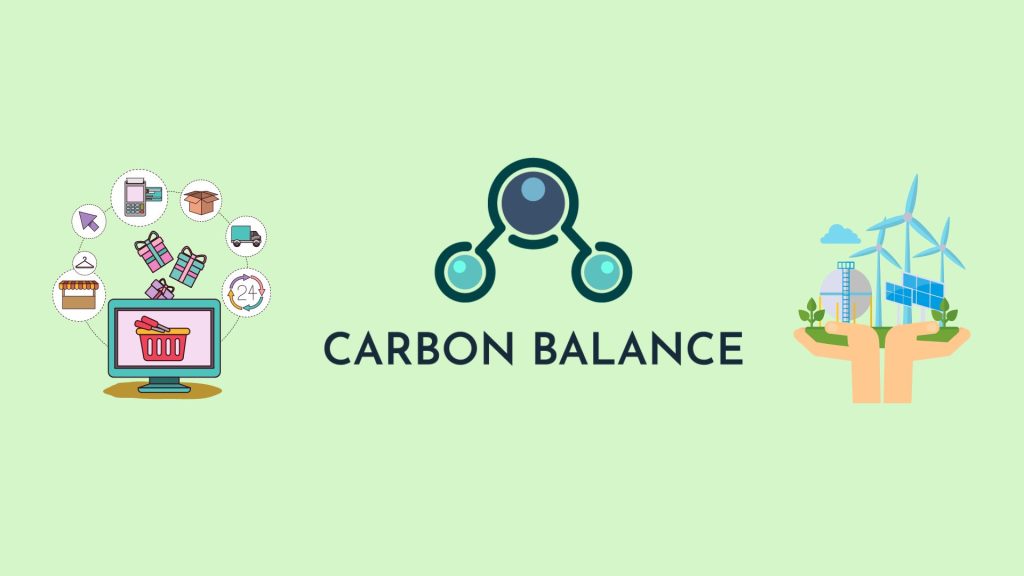Ecommerce has revolutionized the way we shop, making it more convenient and accessible than ever before. However, as ecommerce grows, so does its impact on the environment. The carbon footprint of ecommerce includes everything from manufacturing and transportation to packaging and disposal, and it is important to measure and report this impact in order to make more informed decisions about sustainability. In this blog post, we will explore the importance of measuring and reporting ecommerce carbon footprint, as well as the metrics and standards used to do so.
Why Measure Ecommerce Carbon Footprint?
Measuring ecommerce carbon footprint is critical to understanding the impact of online shopping on the environment. By quantifying the greenhouse gas emissions associated with each step of the ecommerce process, we can identify areas where improvements can be made and track progress over time. This information can also be used to inform consumers and businesses about the environmental impact of their shopping habits and make more informed decisions about sustainability.
In addition, measuring ecommerce carbon footprint is becoming increasingly important as consumers and regulators demand more transparency and accountability from businesses. With the rise of eco-conscious consumers and the threat of climate change, businesses that fail to measure and report their carbon footprint risk losing customers and facing regulatory backlash.
Metrics for Measuring Ecommerce Carbon Footprint
Measuring ecommerce carbon footprint requires a set of standardized metrics that can be applied consistently across different products and industries. The following are some of the most commonly used metrics:
- Scope 1, 2, and 3 Emissions: The Greenhouse Gas (GHG) Protocol provides a framework for categorizing emissions into three different scopes. Scope 1 emissions are direct emissions from sources that are owned or controlled by the company, such as fuel burned in delivery vehicles. Scope 2 emissions are indirect emissions from purchased electricity, heating, and cooling. Scope 3 emissions are all other indirect emissions, such as those from purchased goods and services, transportation, and waste disposal.
- Product Carbon Footprint: This metric measures the carbon emissions associated with the production, transportation, and disposal of a single product. It takes into account all stages of the product lifecycle, including raw material extraction, manufacturing, packaging, transportation, use, and disposal.
- Embodied Carbon: Embodied carbon is the total amount of carbon emissions associated with a product or service, including all emissions from the entire supply chain, from raw material extraction to disposal. This metric provides a more comprehensive view of the environmental impact of a product or service than product carbon footprint alone.
Standards for Reporting Ecommerce Carbon Footprint
To ensure consistency and transparency in reporting ecommerce carbon footprint, several standards have been developed. Some of the most widely recognized standards include:
- Greenhouse Gas Protocol: Developed by the World Resources Institute and the World Business Council for Sustainable Development, the GHG Protocol provides guidelines for measuring and reporting greenhouse gas emissions.
- ISO 14064: This international standard provides a framework for organizations to quantify and report their greenhouse gas emissions.
- PAS 2050: Developed by the British Standards Institution, this standard provides a framework for measuring the carbon footprint of a product throughout its entire lifecycle.
Conclusion
Measuring and reporting ecommerce carbon footprint is essential for understanding and reducing the environmental impact of online shopping. By using standardized metrics and reporting frameworks, businesses can track their progress, inform consumers, and work towards a more sustainable future. As ecommerce continues to grow, it is important that businesses and consumers alike take responsibility for the environmental impact of their actions and work towards more sustainable practices.
References:
- “E-commerce and the environment: A review of impacts and challenges.” Science of The Total Environment, Volume 749, 1 July 2020, 141431.
- “Carbon footprint of e-commerce: a review of literature and challenges.” Journal of Cleaner Production, Volume 279, 20 January 2021, 126871.
- “Greenhouse Gas Protocol.” World Resources Institute. https://ghgprotocol.org/
- “ISO 14064-1:2018 Greenhouse gases – Part 1: Specification with guidance at the organization level for quantification and reporting of greenhouse gas emissions and removals.” International Organization for Standardization. https://www.iso.org/standard/75239.html
- “PAS 2050:2011 Specification for the assessment of the life cycle greenhouse gas emissions of goods and services.” British Standards Institution. https://shop.bsigroup.com/ProductDetail?pid=000000000030195460
- “Why Measuring Ecommerce Carbon Footprint is So Important.” Ecommerce News Europe. https://ecommercenews.eu/why-measuring-ecommerce-carbon-footprint-is-so-important/



